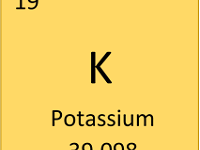Beryllium
What is Beryllium? Beryllium is a silvery-white metal that is the fourth element on the periodic table. Beryllium is often used in alloys with copper and nickel to make things like springs, electrical contacts, and electrodes. It’s often used in alloy form because of how soft the metal is naturally. Beryllium’s Place in the Periodic Table Beryllium is named after the Greek name for be... »

